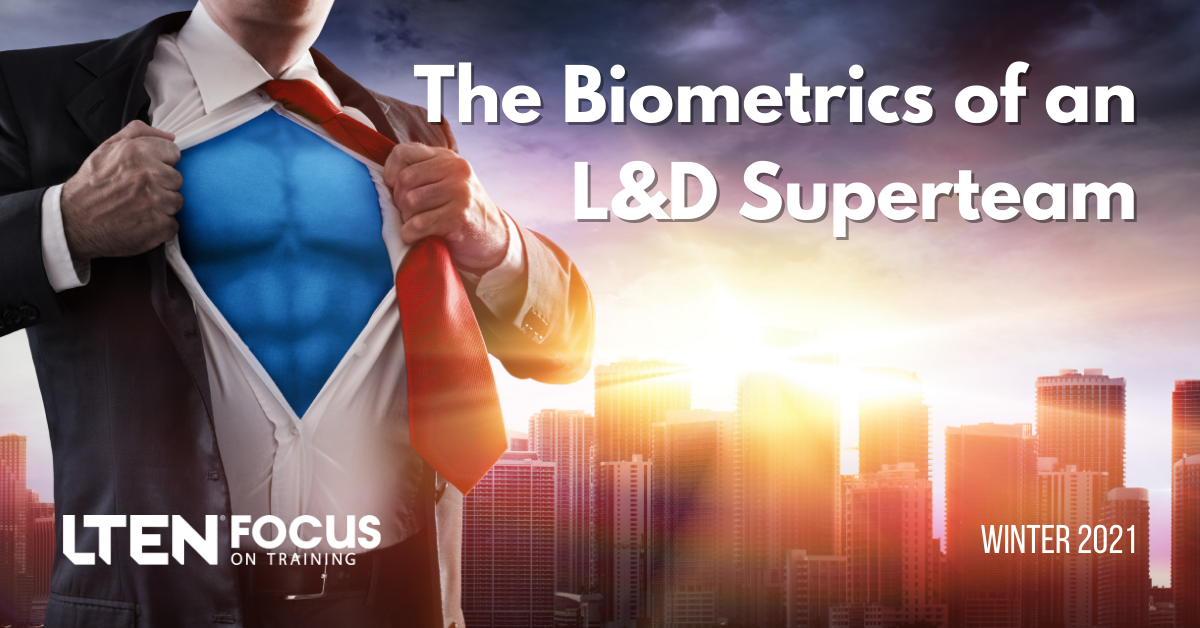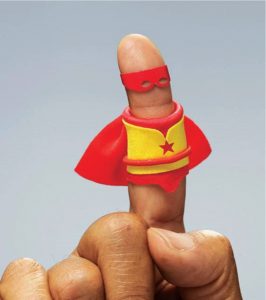
The Biometrics of an L&D Superteam
Guest Editor – Daron Moore
Learning programs are only as effective as the people who create, deploy and govern them.
Building a powerhouse learning and development team requires four key components, “the 4 Ps.” Performance means giving your team specific success criteria and examples of what “great” looks like. Process gives standard operating procedures for the most common and critical “How do I…?” questions that will inevitably arise. Products are the tools and technologies needed to get work done. Finally, People are the hands-on talent responsible for carrying out initiatives.
Most innovative programs are only as effective as the people who create, deploy and govern them. As we’ve all been thrust into a “new normal,” we can ensure our teams are in good hands by finding the right fits for the “fingers” on our teams.
The Thumb
This is the oddball, who stands out in more ways than one. With their creative ideas, a thumb can bring the group together (fist) and provide inspiring thumbnail views into what is possible. Beware: The thumb will take risks and is willing to go down untraveled paths. Be sure to have quality assurance tools in place.
 The Index
The Index
The leader, the index, is strategic in all things and can guide the rest of the team toward the end goal. As a constant finger on the pulse of the organization, their ability to point the group in the right direction is the glue that holds the group together. Beware: Index team members will find it easy to have a finger in every pie. Strong project management capabilities may be needed.
The Middle
Here’s the rebel – count on this team member to always challenge conventional thought and status quo. They ask “Why?” and often respond with “why not,” keeping the team energized, ahead of the curve and often entertained. Beware: These team members need freedom to express and explore. Create safe environments for them to strive, but be clear on the guardrails as well.
The Ring
The dedicated person is your executioner. They get things done and follow through on commitments. A true team player, the ring doesn’t mind not being in the forefront and enjoys the success of others. Never one to point the finger, they don’t complain, gripe or moan. Beware: Rings are most likely to work their fingers to the bone. Be sensitive to burnout and reinforce progress over perfection.
The Pinky
The little guy has a proficiency for the details and problem-solving. Pinkies are specialists, great at reaching otherwise inaccessible areas and allowing the team to expand its radius in the organization. They don’t mind dirty work and never break promises. Beware: Pinkies are more inclined to work individually than in a group. Encourage opportunities to partner.
Speaking from firsthand experience, simply having the right talent is not enough to make an impact. Working individually, things can quickly get out of hand. Communication, trust and accountability prevent work from slipping through your fingers. Establishing synergy and a strong team culture will ensure high fives.
Daron Moore is senior manager, learning & development, for Greenway Health. Email Daron at daron.moore@greenwayhealth.com.








